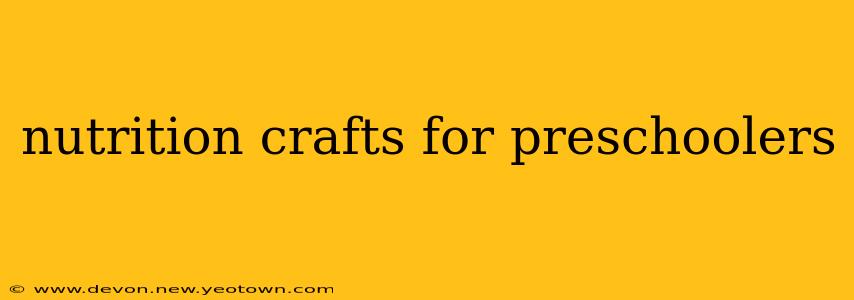Ever wished you could make learning about nutrition fun and engaging for your preschooler? Forget boring lectures and complicated charts! Let's dive into a world where healthy eating transforms into exciting crafts, fostering a love for fruits, vegetables, and healthy habits that will last a lifetime. This isn't just about creating pretty pictures; it's about planting seeds of healthy choices in young, eager minds.
My name is Sarah, and as a preschool teacher with over 10 years of experience, I've seen firsthand the magic that happens when learning becomes playful. This post is packed with ideas, tips, and inspiration for crafting a nutritious future for your little ones.
What are the benefits of nutrition crafts for preschoolers?
Before we jump into the fun, let’s talk about the "why." Why bother with nutrition-themed crafts? The benefits are numerous:
- Makes learning fun: Learning about healthy eating doesn't have to be a chore. Crafts turn it into an enjoyable experience.
- Improves understanding: Visual aids help preschoolers grasp concepts better than abstract explanations.
- Encourages healthy eating habits: By associating healthy foods with positive experiences, you're more likely to see them make healthier choices.
- Develops fine motor skills: Many crafts involve activities that build dexterity and coordination.
- Sparks creativity and imagination: There's no limit to the creative ways you can explore nutrition through crafts.
Fruit and Veggie Printing:
This is a classic for a reason! It’s simple, messy (in a good way!), and incredibly effective.
What you need:
- Various fruits and vegetables (apples, oranges, potatoes, carrots – cut in half)
- Tempera paint
- Large sheets of paper
- Newspaper to protect surfaces
How to do it:
Dip the cut side of the fruit or vegetable into the paint and gently press it onto the paper. Experiment with different colors and arrangements for unique designs. Talk about the colors, textures, and shapes of the different fruits and vegetables while you're working.
Vegetable Nature Collages:
This activity combines creativity with nature's bounty.
What you need:
- Various colorful vegetables (broccoli, bell peppers, carrots, etc.) – consider using scraps!
- Glue
- Construction paper or cardboard
- Scissors (adult supervision required)
How to do it:
Cut the vegetables into interesting shapes and arrange them on the paper to create a colorful collage. Talk about the different vegetables' nutritional benefits as you work. This is a great opportunity to introduce new vegetables that they might be hesitant to try.
Healthy Eating Plate Craft:
This is a fun way to visualize a balanced meal.
What you need:
- Paper plate
- Crayons, markers, or paint
- Cutouts of different food groups (fruits, vegetables, grains, proteins)
How to do it:
Have your preschooler decorate the paper plate. Then, help them glue the food cutouts onto the plate, creating a balanced and colorful meal. Discuss what makes a meal healthy and how different food groups contribute.
DIY Fruit Salad Snack and Craft:
This is a hands-on activity that combines making a snack with creating a visual representation.
What you need:
- Variety of fruits (strawberries, bananas, blueberries, grapes – choose child-friendly options)
- Toothpicks (adult supervision required)
- Paper or a small plate
How to do it:
Let your preschooler help assemble the fruit salad. Once it’s ready, use toothpicks to create little "fruit kebabs" that represent the different fruits in the salad. You can arrange these on a paper or plate to create a colorful fruit salad craft.
Frequently Asked Questions (FAQs):
H2: What if my preschooler is picky about fruits and vegetables?
This is common! Don't force it. The goal is to make healthy eating appealing, not a battleground. Focus on introducing new foods gradually and positively. Let them participate in choosing and preparing the fruits and vegetables for the crafts, as this can increase their interest.
H2: Are there any safety concerns I should be aware of?
Yes, always supervise young children closely when using scissors, toothpicks, or other potentially hazardous materials. Make sure to wash fruits and vegetables thoroughly before using them in the crafts.
H2: How can I make these crafts even more educational?
Incorporate a short discussion about the different food groups, the benefits of eating healthy, and the importance of choosing a balanced diet. You can also point out the vitamins and minerals found in certain foods.
By transforming nutrition education into creative play, you're laying the groundwork for a lifelong love of healthy eating. Remember to make it fun, engaging, and above all, enjoyable for your little one. Happy crafting!

